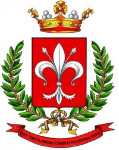Palazzo Innocenzo III
Ultimo aggiornamento: 18 ottobre 2023, 13:08
Palazzo Innocenzo III
Palazzo Gentilizio che fu probabilmente sede di riposo e dimora estiva di Lotario dei conti di Segni, futuro papa Innocenzo III.
Costruito nell’XI secolo circa, presenta una caratteristica peculiare delle strutture medievali: il cortile con pilastro, su cui era posizionata una lanterna per illuminare lo spazio esterno di notte.
L'archeologo Alfonso Bartoli (1874-1957) individuò sulla facciata due formelle con gigli, ora deteriorate: si interrogava quindi sulla possibilità che lo stemma araldico della città di Ferentino derivi dall'insegna dei Montelongo, parenti di Innocenzo III e proprietari dell'edificio.
Il giglio (o fleur-de-lis) è un'antico simbolo di fertilità e Gregorio di Montelongo, nativo di Ferentino, lo avrebbe poi inciso sulle monete che coniò quando fu Patriarca di Aquileia (1255 circa).
Altre ipotesi sull’origine del Giglio. Si tramandano altri avvenimenti che potrebbero aver portato il simbolo del giglio in città: nel 1149 il Re Luigi VII di Francia era di ritorno dalla seconda crociata in Terra Santa, che fu per lui disastrosa. Il convoglio era lento poichè aveva partecipato anche la Regina, accompagnata da parecchie dame. La tappa precedente era stata presso l’Abbazia di Montecassino, dove aveva incontrato Papa Eugenio III, che in quell’occasione lo fece riconciliare con la moglie. Fermatosi a Ferentino, concesse al Comune di assumere il suo emblema in cambio di cibo, riposo e cure mediche per tutto il suo seguito.
Altra possibile origine del giglio fu il dono fatto da Re Carlo D’Angiò, come iscritto tra le Cronache di Fossanova del XIII secolo, mentre era alla ricerca di milizie per la conquista del Regno di Sicilia: nel 1266 scendeva da Roma verso Capua - dove era asserragliato il nemico Manfredi - e nel tragitto riuscì ad aggiungere ai suoi tre battaglioni circa 400 mercenari, alcuni dei quali provenienti da Ferentino. Fu quella vittoria sul fiume Calore, con la morte di Manfredi, a chiudere il dominio degli Hohenstaufen in Italia.
ENG This aristocratic palace was originally established by a noble family, yet henceforth and thereafter used as the general retreat and the summer residence of Lotario dei Conti di Segni: future Pope Innocent III.
Most probably built in the 11th Century, this building has a peculiar feature for medieval structures: a courtyard with a pillar, on which a lantern was positioned to illuminate it.
Archaeologist Alfonso Bartoli, highlighted two tiles (now deteriorated) on the facade, which held a bas relief lily, that was formerly dyed. He therefore wondered about the possibility that the heraldic coat of arms of the city of Ferentino actually derives from the insignia of the Montelongo (relatives of Innocent III and owners of the building).
The lily (in heraldry: fleur-de-lis) is an ancient symbol of fertility and Gregorio di Montelongo (a native of Ferentino) would later en
grave it onto coins he minted when he was Patriarch of Aquileia (around 1255).
grave it onto coins he minted when he was Patriarch of Aquileia (around 1255).
Additional hypotheses on the origin of the Lily Insignia. Other events could be correlated to the adoption of the lily: in 1149 King Louis VII of France was returning from the second crusade in the Holy Land, which was disastrous for him. The convoy was slow as the Queen also attended, accompanied by several ladies. The previous stop had been at the Abbey of Montecassino, where he had met Pope Eugene III, who was able to reconcile him with his wife. He then stopped in Ferentino, granting the Municipality to assume his emblem in exchange for food, rest and medical care for all his entourage.
Another event involving the prized symbol is recorded in the XIII century Chronicle of Fossanova: the lily could have been donated by the Guelph King Charles of Anjou. He was looking for militias for the conquest of the Kingdom of Sicily: in 1266, descending from Rome to Capua - where the enemy Manfredi was waiting for him - he managed to add about 400 mercenaries to his three battalions, and some of theme were citizens of Ferentino. The victory on the Calore river, where Manfredi found his demise, closed the dominion of the Hohenstaufen family in Italy.
